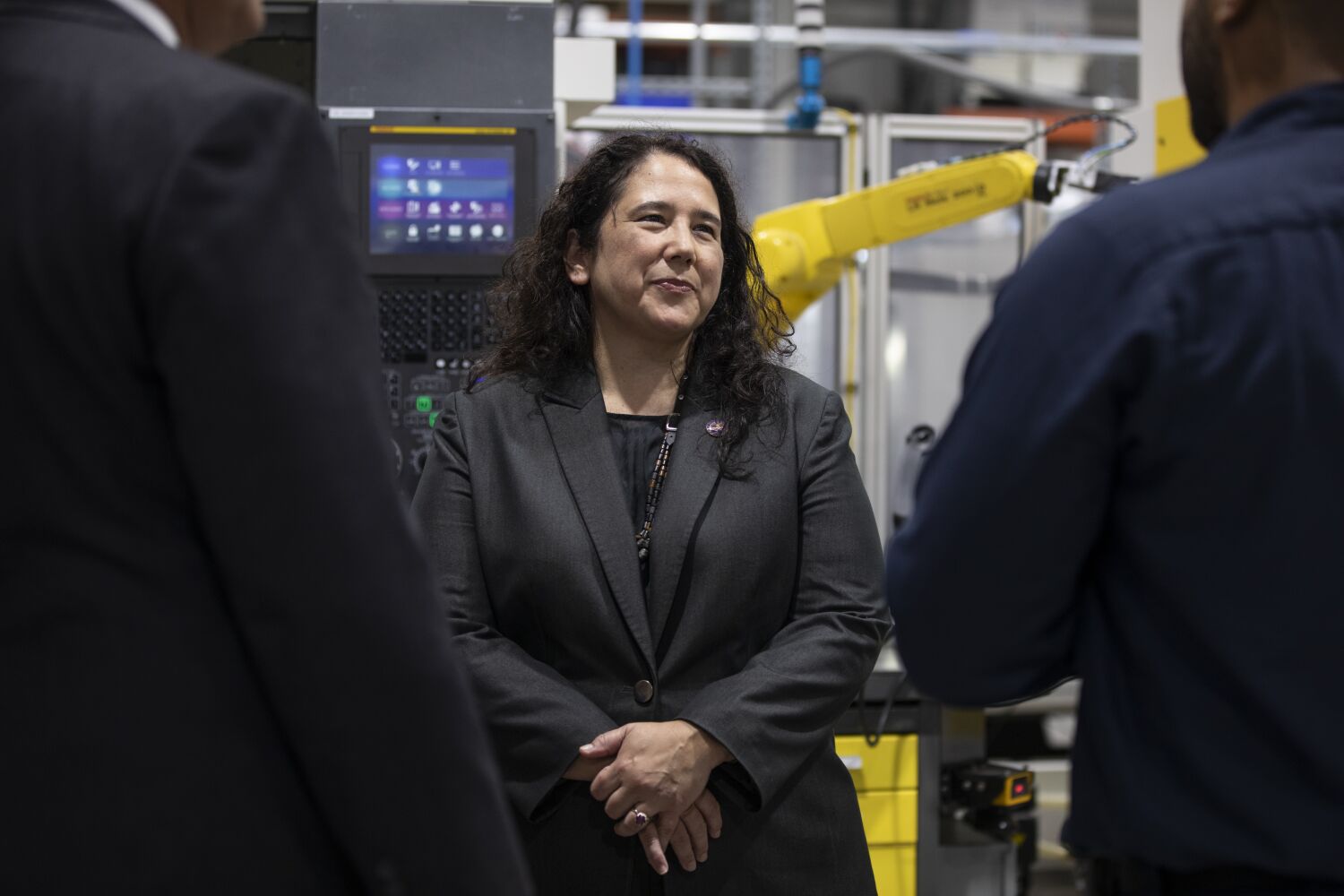Natallie Rocha
The San Diego Union-Tribune
WWR Article Summary (tl;dr) As Natallie Rocha reports, “The White House’s top advocate for the nation’s 33.2 million small businesses visited San Diego this week. Isabella Casillas Guzman, the head of the U.S. Small Business Administration, met with local leaders and entrepreneurs on Wednesday to discuss ways the federal agency can help small businesses succeed.”
San Diego
During the coronavirus pandemic, Guzman led the SBA,which spearheaded crucial small business aid such as the Paycheck Protection Program loans, the COVID-19 Economic Injury Disaster Loan program and the distribution of federal money that translated to local grants.
And despite bungled supply chains and inflationary pressures, business openings in California outpaced business closings from March 2020 to March 2021, according to the latest figures from the SBA. But small businesses experienced a net decrease of 579,931 jobs during that period.
Guzman is no stranger to the state’s economic landscape as she previously served as the Small Business Advocate for the state of California before joining President Biden’s Cabinet on March 17, 2021, to lead the SBA.
Here’s what she had to say about how the SBA is working to build more equitable access to resources in the next phase of the recovery. (The conversation has been edited for clarity and length.)
Q: The SBA had a lot more visibility during the pandemic. How are you leaning into that going forward as far as making it more accessible?
A: Our strategy is to learn from the important COVID relief programs. We need to learn from what the Biden-Harris administration has done in trying to make sure that we fill gaps in those relief programs to serve everyone more equitably. And based on those experiences, we need to translate that to our core products — our lending programs — where we want to make them simple, easy to use for a broader distribution of partners who can get loans into the hands of more small businesses. And it is a unique moment. We were the best-kept secret in government, and now we’re known and that’s empowering to the small businesses who can benefit from our free advice, from our great affordable capital programs, as well as from our insights on how to grow your business in new markets.
Q: Many of the loans and grant programs have been aimed at recovery for existing businesses. But what is being done to help build resilience for new businesses or micro-businesses? What resources can they access going forward as the cost of doing business in California is really high?
A: As I travel across the nation, small businesses are facing inflationary pressures or disruptions in supply chains that cause more price increases. And then there is the tight labor market where they’re having to pay more. Small businesses that know how to manage their balance sheet are the ones that are succeeding. And so we’re working really hard to make sure that we can help those businesses. That means increasing your revenue opportunities so that you can build a resilient business model. And honing your operational skills so that you can improve your expense side. So it’s both the revenue, the expense side and making sure that small businesses can manage and build a good successful model.
Q: What resources are available for different sized businesses, from a micro-business up to a 500-person small business?
A: We have the products. It’s about better honing them so that the underwriting and eligibility are more accessible to our small businesses. And that’s what President Biden’s commitment is to level the playing field, and that means making sure that small businesses have the skills and the tools that they need to succeed, and capital is the one priority that they all cited.
Q: What are some examples of how you’re trying to build more equity in SBA programs? Does that look like making things more culturally accessible or funding local organizations and finding ways to get these programs to their people?
A: The American Rescue Plan did a great job in trying to establish a broader network at the SBA. It’s called the Community Navigator pilot program, and it funds entities that can help us really build bridges into communities. So it’s groups like the International Rescue Committee that’s big in San Diego working with entrepreneurs in the immigrant community. It’s the Urban League that’s also working in San Diego to make sure that we can build bridges to Black founders who are starting businesses at high rates and the U.S. Hispanic Chamber of Commerce. By working with those organizations, we can start building trusted sources to direct them to the SBA. So that’s the first step, and then it’s on the other end, making sure that our products actually fit the needs of those businesses. They’re having to reorganize differently. They’re having to structure their business models differently, and our products have to respond.
Q: During your visit to San Diego, has anything stood out to you from how our economy works with our cross-border region or anything else unique?
A: The San Diego region has a lot of military and contracting opportunities and also relies heavily on the travel and tourism (industries), so they’ve seen the full spectrum. From businesses that have been able to stay open and afloat and do business to those who had to close for months on end and have now forever been changed. So I think that it’s reflective of the nation in terms of the range of impact. But also, notably, it is that communities have tried to weave together a support network that’s diverse and that really serves the needs of San Diego, which is so diverse.
This story originally appeared in San Diego Union-Tribune.
©2022 The San Diego Union-Tribune. Visit sandiegouniontribune.com. Distributed by Tribune Content Agency, LLC.












































































































































































































































































































































































